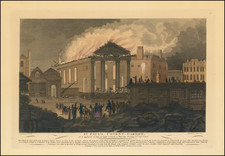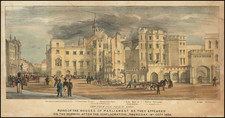Rare broadside map depicting London After the Great Fire of 1666. Not in Howgego.
Fascinating broadside map of London published in the same year as the Great Fire of 1666.
The map covers London from Bunhill to St. George's in Southwark, and from St. James's to Redriff. In the lower-right is an inset perspective view of the city, entitled "Londons Brandt", showing the city ablaze with flames towering above the ill-fated medieval St Paul's Cathedral.
At the upper left is a model plan for the reconstruction of London, drawn up by Robert Hooke, with a key naming ten locations. Following the fire, Hooke was appointed Surveyor for the City of London, in 1667. In the ashes of the ravaged city, he immediately began to stake out new streets, homes, and businesses. His childhood friend, Christopher Wren, represented the Crown as Surveyor for Royal Works, and together these two set about rebuilding London in partnership. Hooke's pioneering work in land surveying and in mapmaking aided the development of the first modern plan-form city, although his 1667 proposed grid-system plan for London was rejected in favor of rebuilding along existing routes. Even so, Hooke was key in devising for London a set of planning controls that remain influential.
This appeared alongside several other continental maps showing the extent of the fire by De Witt and Doornick. This presented map contains notable detail in the Westminster and St. James areas, which contrasts with the center of the city, which is the area that burned down. The detail is very extensive and attractive, with numerous points of historical interest visible. The present example does not include a text panel below the map.
The Great London Fire of 1666
The Great Fire of London was one of the most consequential events of the 17th Century. The conflagration started in a bakery on Pudding Lane and raged from September 2nd to 5th, 1666. The city then consisted largely of timber and thatch medieval buildings that, after one of the hottest and driest summers on record, went ablaze as if they were kindling. Almost 90% of the city of London within its old walls was destroyed, 13,200 homes were burnt to the ground and 70,000 of the city's 80,000 residents were left homeless. Many of the head offices of England's major trading companies were destroyed, and the dislocation severely hindered England's economy.
The event could not have occurred at a worse time, for England was then at war with both the Netherlands and France, in the midst of the Second Anglo-Dutch War (1665-7). Up to the time of the fire, the English were winning the war, but the calamity curtailed the country's military capabilities. This was, in part, responsible for allowing the Dutch Navy to sail up the Medway River in Kent to burn the Chatham naval shipyard in June 1667, one of the most humiliating defeats in the history of the Royal Navy. This ensured that the war was soon concluded on terms highly favorable to the Dutch.
While several plans were proposed for the rebuilding of London on rational geometric patterns, including those by notable figures such as Robert Hooke and John Evelyn, Charles II rejected these designs and ordered London to be rebuilt on its ancient street pattern. However, this process of renewal gave rise to the great era of English Baroque architecture, epitomized by Sir Christopher Wren's new St. Paul's Cathedral (completed 1720), which now dominates the City. The fire also led to improved building standards and fire prevention programs which ensured that a large accidental conflagration would never occur in Britain.
Rarity
We note three institutional examples, at the Yale University Library, the British Museum, and the Bayerische Staatsbibliothek. We find two examples on the market in the past 20 years. The work is unlisted in Howgego.
Very little is known about Serlin.
Wilhelm Serlin was born at Niirnberg in 1625, the son of a clerk. In 1650, he acquired the rights of a Frankfurt citizen.
Serlin appears to have settled down as a bookseller and from then onward signed himself 'Burg. vnd Buchh. in Franckfurt am Mayn'. His first activity of note, which should have secured him a place in historiographical books of reference, was the publication, from 1659 onward, of the Diarium Europaeum for which he acted as publisher until his death, when his wife took over. The Diarium belongs to the category of historical magazines which provided the seventeenth-century reader with reports and commentaries on contemporary events. There were at that time two such publications in Frankfurt, both of them illustrated, written in an agreeably chatty style and surprisingly reliable: (1) Theatrum Europaeum, founded by Merian and still in Serlin's day published by the Merian family; (2) Diarium Europaeum (continued later under the title of Allgemeine Schaubiihne der Welt), published by Serlin.
Serlin acquired the Ordinari Wochenz newspaper in 1665, ultimately changing the name to Frankfurter Journal.









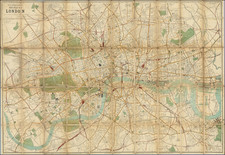
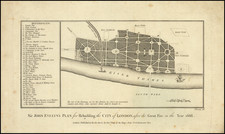
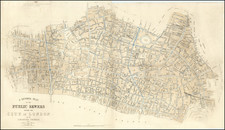
![(London) Ch. de Withal [Whitehall Palace]](https://storage.googleapis.com/raremaps/img/small/98051.jpg)
